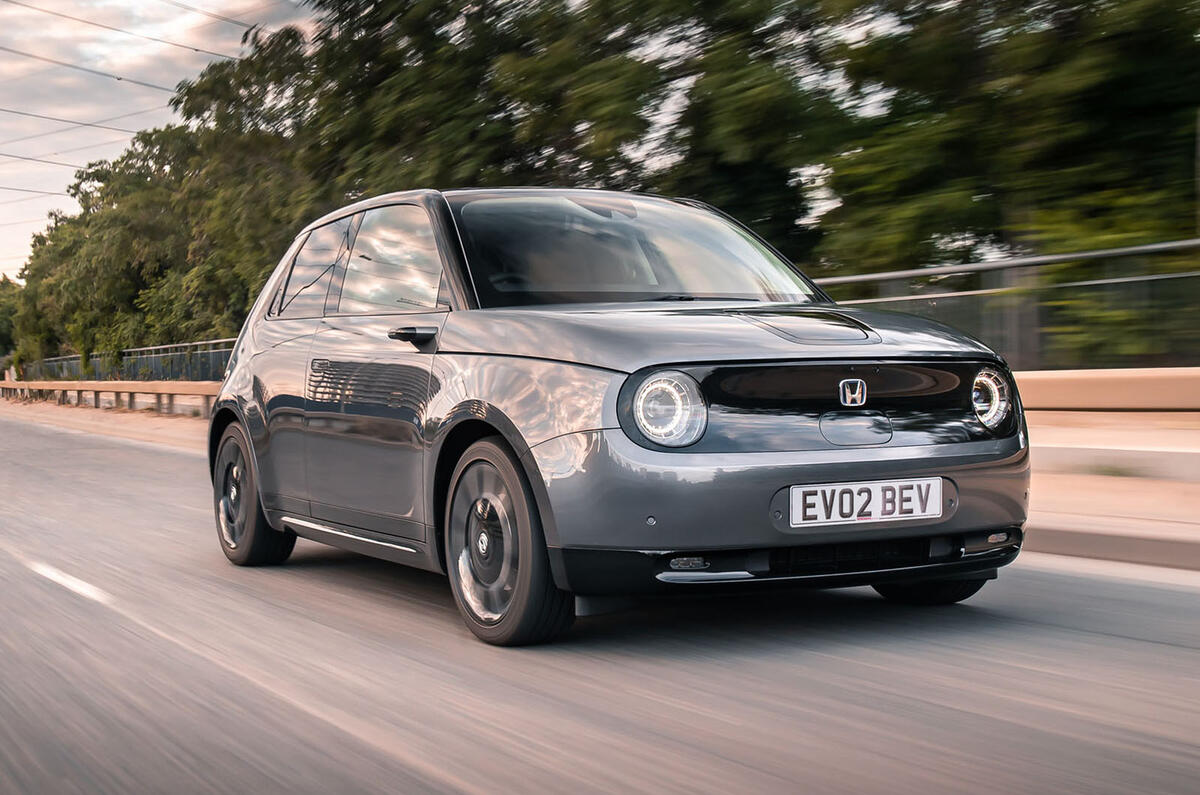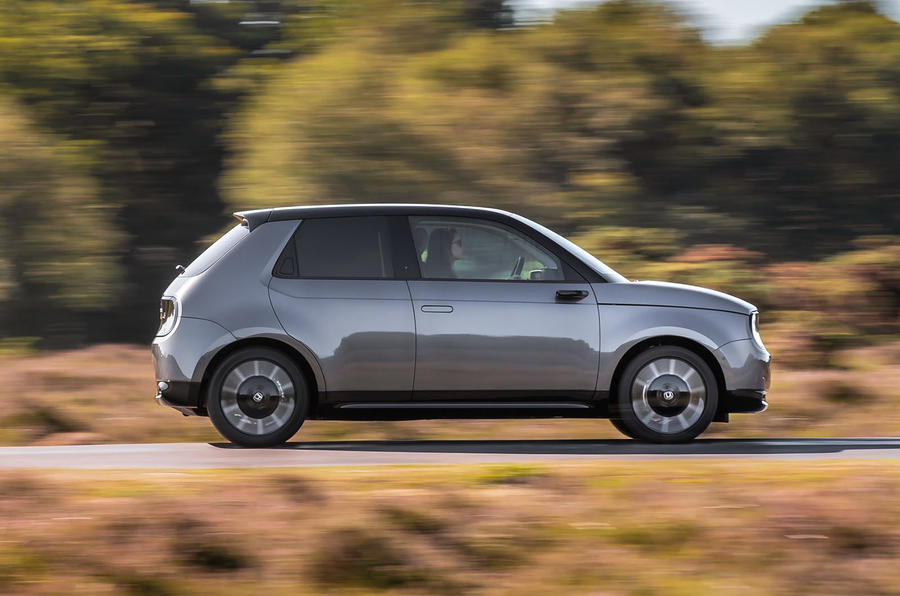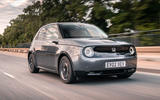What is it?
It’s well-made, well-equipped and extremely cute, but you might as well know from the start that your opinion of Honda’s new supermini EV is going to depend almost entirely on how you view its relatively meagre WLTP cruising range of 125 miles.
This dominant statistic (low compared with most other electric cars currently being rushed to market) directly controls who will buy the Honda E and how it will be used. It’s even more important even than the relatively high price, which starts just over £26,000 for a basic version (after the £3000 government grant) and runs close to £30,000 once you’ve bought the plusher, faster Advance version and added obvious options.
Knowing that range talk will be dominant, Honda is careful to describe the new car as an urban runabout, relentlessly pointing out that the average British motorist’s commute is only about a fifth of the little E’s range, which means its battery has plenty of juice for most suburbanites. If you need more, it implies, better to buy something else. Or own a second car.
The flaw in that argument comes from the E’s innate eye and driver appeal. Its modern, simple reprise of the styling of the 1972 Civic – itself a new kind of Honda back in the day – makes it uniquely appealing among current small cars. Once you’re behind the wheel, it soon dawns on you that the E is also dynamically different from the horde: it avoids the disappointingly oversprung and underdamped suspension of many electric cars (especially those towards the bottom of the size/price range), and that’s another inducement to the driver to use it for more than the low-grade errands implied by the words ‘urban’ and ‘commuter’.
Mind you, it’s easy enough to understand what Honda is saying: the E is a small car, just 3.9 metres long and, even with its modest 35.5kWh battery, the lightest of the two varaints weighs 1514kg. Give it a big battery and you would add 20cm or 150kg and get a car with an entirely different character and price. Other car makers have shied away from uniquely engineered small EVs, and this is why.




























































Join the debate
Add your comment
Hit & Miss
I like the styling, it’s kept enough of the concept for me and is subtly distinctive. As an urban runabout I don’t have concern over the range - there will be enough urbanites with access to small parking spaces and charging to allow it to sell. In its stated environment the tiny turning circle is a real plus.
Where I have issue is the price and the amount of unnecessary tech given its purpose as an ‘urban runabout’. In an urban environment where the demands on your attention are the highest the last thing a driver needs is so many techy distractions and screens. One picture shows at least thirty touch points on the displays beyond the binnacle itself - imagine the criticism if a manufacturer put this many buttons in front of a driver, yet no criticism here? Even if all can be voice controlled or switched off it’s still unnecessary in the environment the car was allegedly designed for. The more so given the very short trips it will mainly be used for.
Keep the styling, ditch the multitude of screens for a binnacle with just speed and range, add a fancy bracket for the top-of-the-range smartphone most customers will have anyway for their playlists and nav, knock £6-7K off the price -sorted!
Download Video
Honda the great. Thanks for this new product.
Missed opportunity
I am sadden that Honda have missed an opportunity to reinvigorate their brand with this unique little car. Great design but range too poor and just too expensive. Probably would have found some niche sales by appealing to those who could discount one of those factors but the combination will be a killer in the UK. I understand the desire to keep weight to a minimum but surely even a 40kwh battery pack with a WTLP range of 140 miles would not have involved too great a compromise. £30k just too expensive for a city car which isn't very useful to transport the kids.